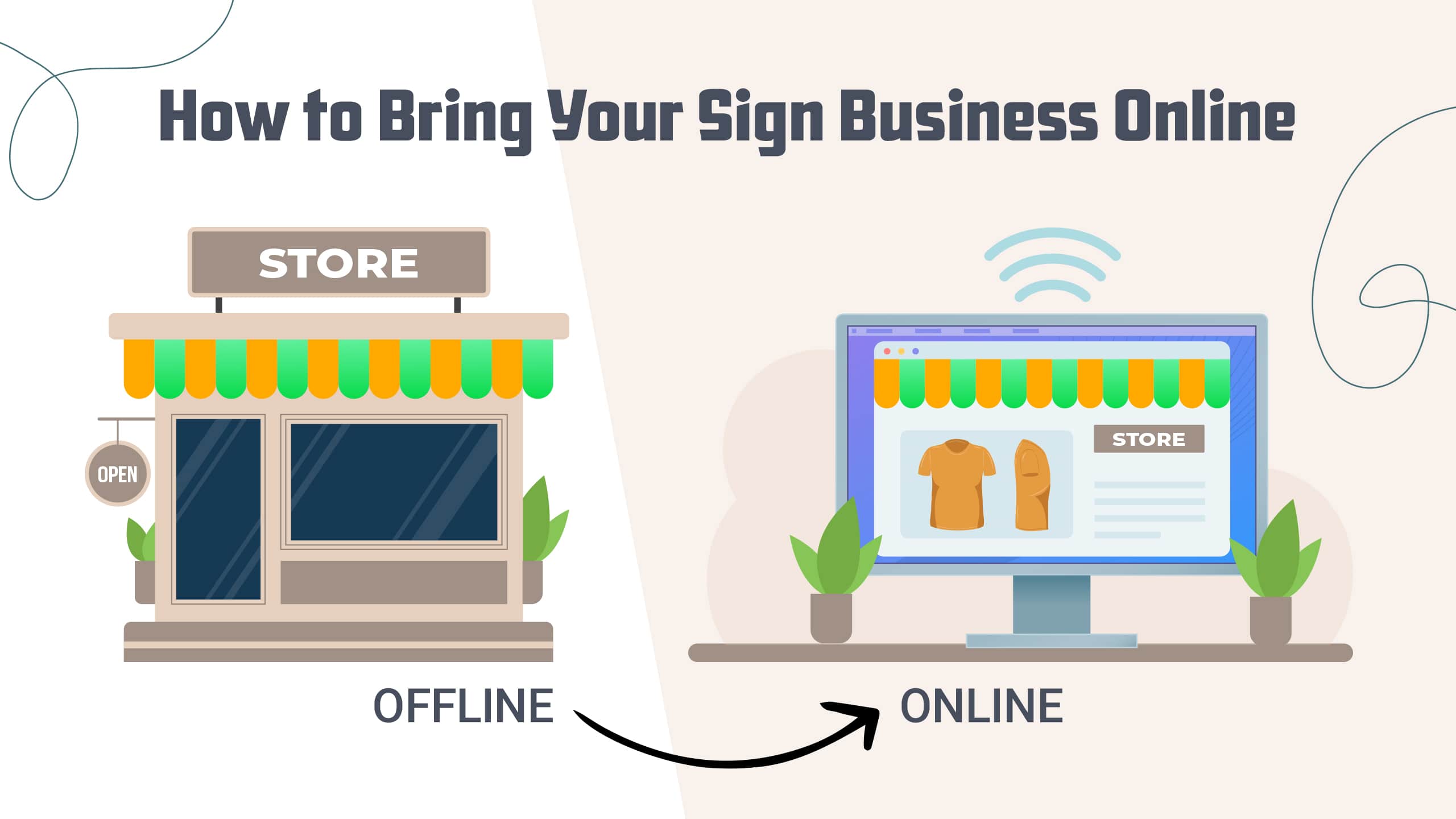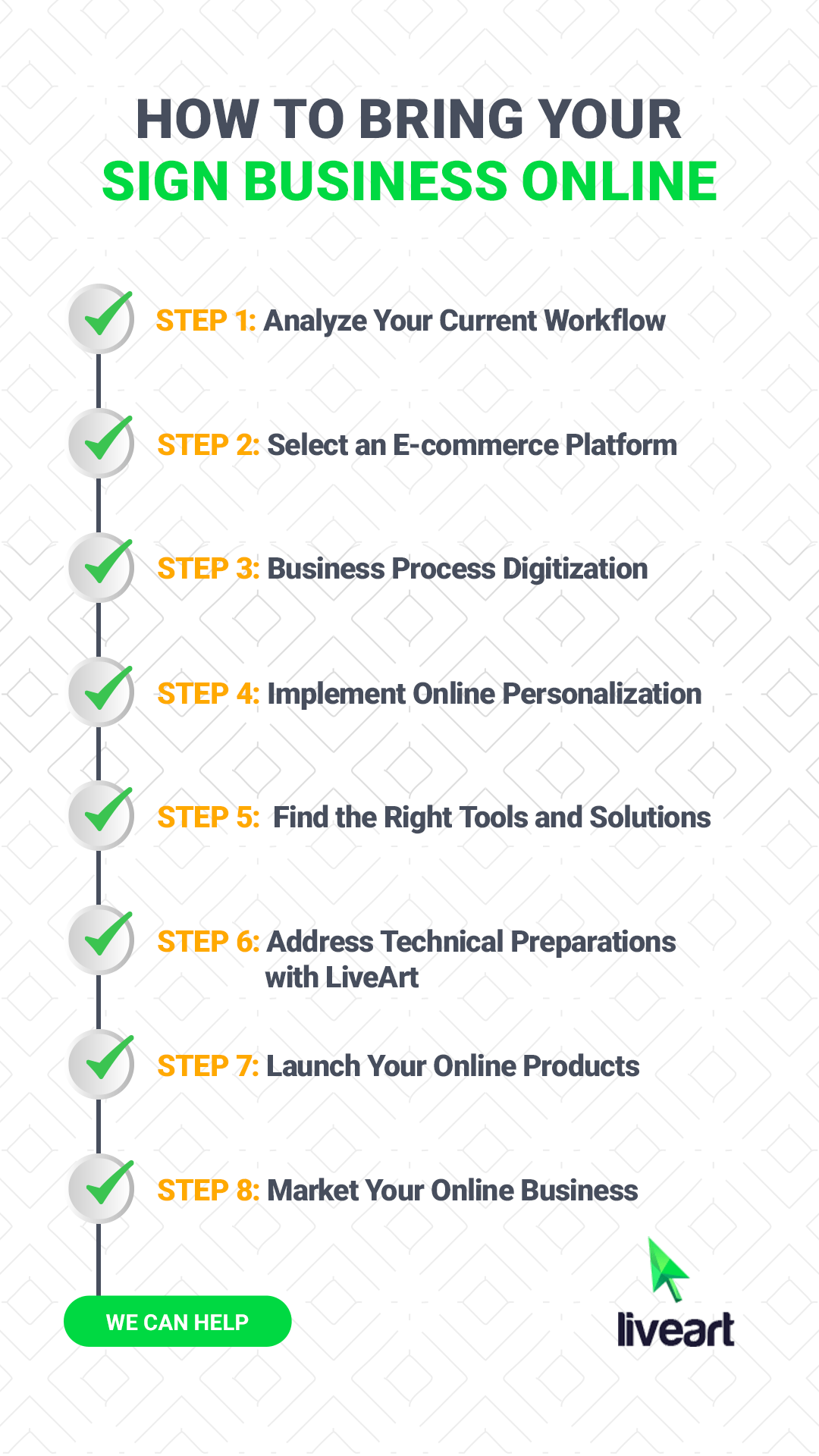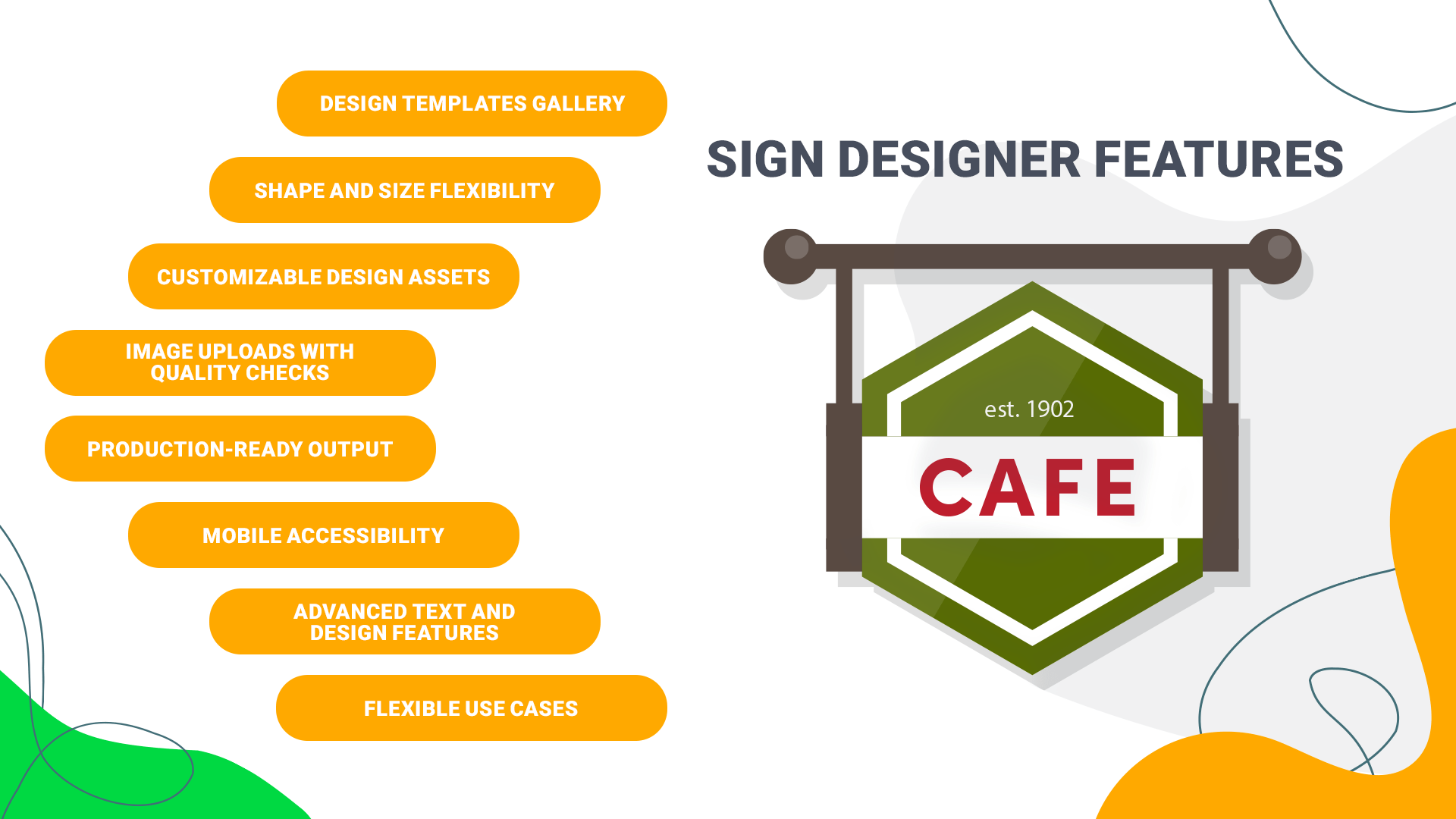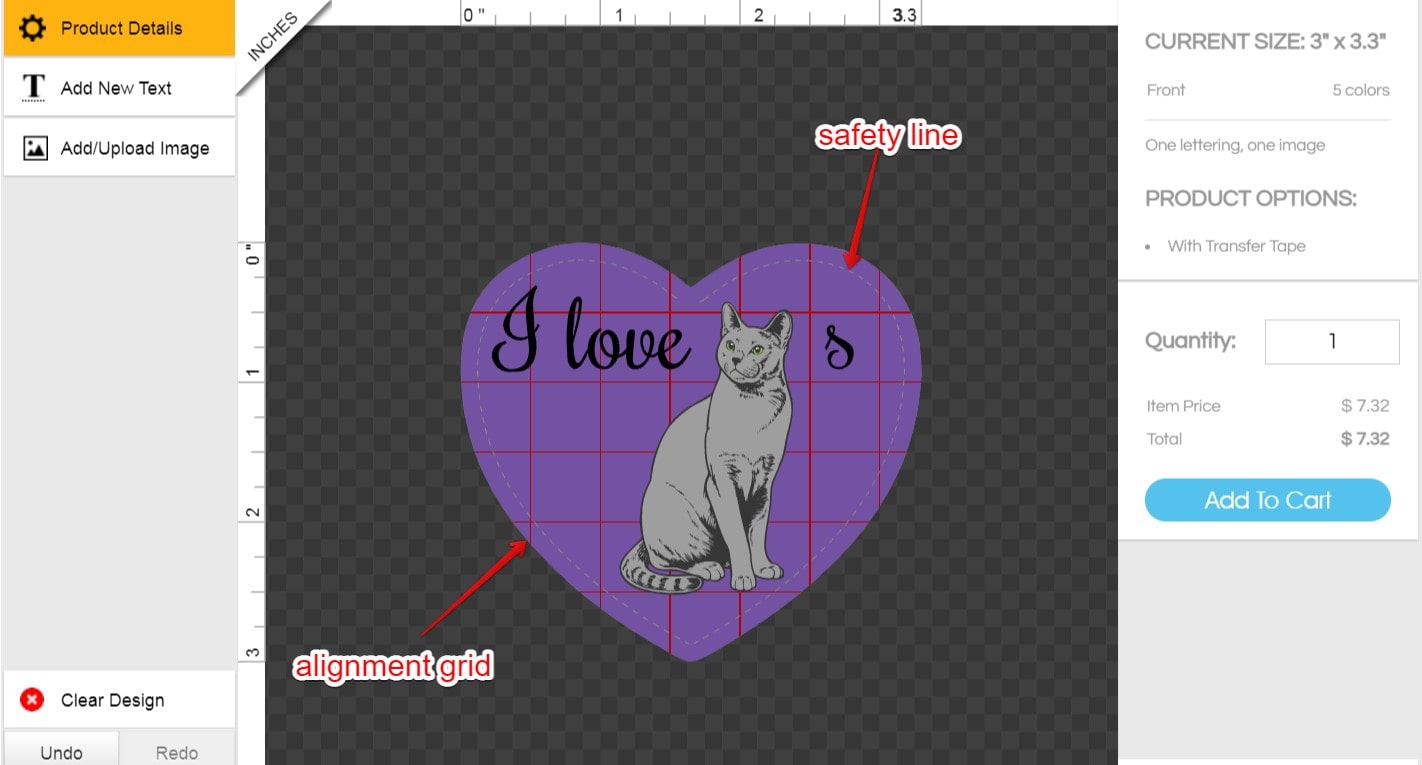
Imagine that you run a small sign business in your town and spend most of your day talking back and forth with customers. You're always juggling phone calls, emails, and in-person visits, trying to understand what your customers want and making their ideas into real goods. Even though this old-fashioned method is personal, it often causes waste and delays that can stop your business from growing and expanding. Welcome to the digital age, where having an online profile for your business has never been more important.
When you go online, you don't just keep up with the times; you open up a world of options. Putting your sign business online will not only help you get more customers, but it will also make your name more visible. With this move to digital, there are more chances to make sales, and a wider range of goods can be offered without the time and location restrictions of a physical store. The first step in this process of change is to understand and rethink your current workflow so that it fits this new digital shape.

Step 1: Analyze Your Current Workflow
This step is essential for finding possible mistakes that could get in the way of your online success. Where do you waste the most time? Is it during the approval process for the design, the pick of materials, or the production itself? By focusing on these areas, you can look for digital options that make these tasks easier.
The goal here is to find chances to improve or automate digital tasks. For instance, the approval process is often slow in companies that make custom signs. Setting up an online system so clients can see, comment on, and accept designs digitally can cut down on turnaround times and errors by a large amount. When it comes to materials, automating inventory management can help you keep better track of them and avoid delays or shortages that could affect production plans.
Step 2: Select an E-commerce Platform
Picking the right e-commerce platform is very important for going online. It will help you with the display and customization of your products, as well as the handling of orders and customer service. You can choose from several choices, but Shopify and WooCommerce are the most useful for the sign business.
> Shopify is renowned for its simplicity and speed of setup. It has an easy-to-use design that doesn't require a lot of technical knowledge, which makes it perfect for business owners who want to set up an online store quickly. Shopify's customizable templates let you make a website that looks professional and fits your brand. Its built-in tools make it easy to process orders and keep track of goods.
> WooCommerce, on the other hand, is a plugin for WordPress websites that offers unparalleled adaptability. There are a lot of plugins that can add extra features, making it very flexible. This makes it a popular choice in the sign business. WooCommerce works best for businesses that need to make their online buying systems or have specific needs for integrating their workflow. It may take a bit more technical know-how than Shopify, but the ability to customize it so much makes it a powerful tool for sign businesses that want to give their customers a unique online experience.
Step 3: Business Process Digitization
When you move your sign business online, you need to do more than just move your product catalog from an actual storefront to a digital one. It means changing everything about how you deal with people, run projects, and deliver orders. Digitizing business processes that were done by hand before, like communicating with customers and proofing, is an important part of this change.
> Setting up systems that can handle questions, quotes, order confirmations, and status updates without needing human involvement for each interaction is what it means to automate customer communications. You can do this with chatbots, automated email replies, or a customer relationship management (CRM) system that is built into your e-commerce platform.
> Digitization is also very helpful for the design proofing process. You can let customers upload their designs, make choices, and accept proofs right from their accounts if you add digital proofing tools to your online store. This not only speeds up the review process but also lowers the chance of mistakes, making sure that the customer is happy with the result.
You need to plan and have the right tools to connect these processes to your online shop. A lot of e-commerce platforms let you connect them to customer relationship management (CRM) systems, email marketing tools, and project management software. Choosing platforms and tools that work well with each other can make things easier and give customers a better experience.

Step 4: Implement Online Personalization
Making online shopping more personal isn't just a nice-to-have; it's also a way for your sign business to stand out in a crowded market. Here are some tips you can follow:
Initiate Personalization
Design your website to be not just a catalog but a creative studio where customers feel inspired and empowered to bring their vision to life. Begin with a clear decision on the scope of personalization:
> Pre-designed signs: Offer a selection for those seeking quick solutions, ensuring these designs are easily customizable for a personal touch.
> Custom designs from scratch: Allow customers to start with a blank canvas, providing tools and guidance to design their perfect sign.
This approach caters to a broad spectrum of needs, from those who need something quickly to those who want a fully personalized product.
Customization Options
Provide a rich set of customization options that are easy to use and understand. Depending on your product line, these could include:
> Size and Shape: Offer standard sizes and shapes while allowing for custom dimensions.
> Background and Materials: Let customers choose from various materials (e.g., metal, plastic, wood) and background colors or patterns.
> Design Elements: Enable the addition of text (with font style and color choices), logos, or other graphic elements.
Each option should be accompanied by visual prompts and explanations to guide the user through their selection process seamlessly.
Pricing Strategy
Transparent pricing is crucial in personalization. Here are ways to present pricing clearly:
> Base Price + Add-ons: Start with a base price for the simplest version of a product and add costs for additional features or customizations.
> Real-time Pricing Calculator: Implement a tool that updates the cost as customers make selections, providing immediate feedback on how each choice affects the final price.
Example Cases:
> A basic 18x24-inch sign might start at $50. Adding a weather-resistant coating could add $15 while upgrading to premium materials might add another $20.
> Custom graphics or logos: Charging a flat fee of $30 for custom graphics uploads and integration.
Visualization and Approval
Incorporate a visualization sign design app that dynamically reflects customers’ choices, allowing them to see a real-time preview of their custom sign. This not only enhances confidence in the purchasing decision but also minimizes misunderstandings and returns. Following the preview, provide an easy-to-use approval button or process to confirm the design before it goes into production.
Checkout Process
Offer flexible payment options to accommodate a wider range of customer preferences:
> Online Payments: Integrate secure payment gateways for credit card, PayPal, and other digital payment methods. Ensure your website's security measures are up-to-date to protect customer information.
> Offline Payments: For those who prefer it, offer options like bank transfers, phone payments, or even a pay-on-pickup option for local customers.
Step 5: Find the Right Tools and Solutions
The digital transition requires software that not only enhances the creative process for your customers but also integrates smoothly with your e-commerce and production systems. The main choice is this:
> Custom Development Services: Depending on the complexity of your requirements, custom development services can tailor an online experience that perfectly matches your business model and operational workflows.
> Sign Builder Software: For most sign businesses, specialized sign builder software provides the functionality needed to enable customers to design their signs online. Look for software that is customizable, user-friendly, and capable of integrating with your e-commerce platform.
Step 6: Address Technical Preparations with LiveArt
One specific sign design tool that stands out for web-to-print stores is LiveArt's designer software. It's designed to make the sign design process both exciting and effortless, offering a wide range of features:

> Design Templates Gallery: Create or allow your customers to choose from a range of pre-designed templates, or opt for complete customization from scratch.
> Shape and Size Flexibility: Offer default or custom sign shapes, and provide size options that are user-defined, predefined, or constrained to ensure compatibility with your production capabilities.
> Customizable Design Assets: Configure your gallery of fonts and clipart images to simplify the design process. The inclusion of a ruler tool for real-size visualizations enhances the user experience further.
> Image Uploads with Quality Checks: Enable customers to upload their images and logos in various formats (SVG, PNG, JPEG, GIF), with automatic low-resolution warnings to ensure quality output.
> Production-Ready Output: The software supports output as vector PDF or SVG in standard RGB, with options for CMYK or Spot colorspace customization, ensuring that the final product meets professional printing standards.
> Mobile Accessibility: A mobile-friendly interface allows for on-the-go design creation and editing, ensuring your service is accessible anytime, anywhere.
> Advanced Text and Design Features: Empower customers with text effects and design tools to create visually appealing sign designs.
> Flexible Use Cases: Whether for direct order placement or as a quotation tool, the software fits various business models.
Important Technical Considerations:
> Preflight Checks: Implement preflight checks to ensure all designs meet printing requirements, such as DPI checks for image resolution.
> Color Management: To guarantee that the printed colors match what customers see on screen, color management tools are essential. The right approach involves understanding the differences between RGB and CMYK color models. RGB is typically used for digital displays, while CMYK is the standard for printing.
Converting between these color spaces without losing fidelity requires meticulous attention to color profiles, ensuring colors are translated accurately from digital to print. For example, if a customer uploads a logo or image in the CMYK color space, it needs to be displayed correctly in the visualization tool you are using. Additionally, you need to receive printable design output with the same CMYK colors so that it will be compatible with the manufacturer's printers. This will ensure that your customer's expectations are met.
> Online Pricing Implementation: Integrate your pricing structure online transparently and dynamically, adjusting in real-time based on customer design choices.
> Production-Optimized Output Files: Ensure the software provides output files with the necessary specifications (DPI, crop bleed marks, color profiles) for your production team, facilitating a seamless transition from design to production.
Step 7: Launch Your Online Products
Launching your online products involves more than just listing what you sell; it's about creating an interactive and engaging online environment where customers can easily customize and visualize their products. Here are strategies to digitize existing product templates and designs effectively:
> Digitize Your Catalog: Begin by converting your existing sign templates and designs into digital formats that can be easily edited and personalized online. This may involve vectorizing designs, categorizing them based on themes or uses, and ensuring they are compatible with your online design tool.
> Interactive Product Pages: Each product page should allow customers to visualize changes as they customize their sign. Incorporate interactive elements that show real-time previews of color changes, text additions, and design adjustments.
> Customization Guides: Provide customers with easy-to-follow guides or tutorials on how to personalize their chosen products. This could include video tutorials, step-by-step graphic guides, or live chat support for real-time assistance.
> User-Friendly Design Tools: Ensure the online design tools are intuitive and accessible for users of all skill levels. Features should include drag-and-drop functionality, easy text editing, and straightforward options for uploading images or logos.
Step 8: Market Your Online Business
Marketing your online sign business is crucial to attract customers and drive sales. A strategic approach combining SEO, content marketing, and social media engagement can broaden your reach and strengthen your brand presence:
SEO: To get more people to see your website, make it search engine-friendly. This means using the right keywords, making sure your blog posts and product descriptions are optimized, and making sure your website works well on mobile devices and loads quickly. Claim your Google My Business listing, get listed in local directories, and use location-specific keywords in the text of your site to make it better for local searches if you serve certain areas.
Content Marketing: Create valuable content that attracts and engages your target audience. This can include:
- Blog Posts: Write about topics related to your industry, such as the latest trends in sign design, tips for business branding, or how-to guides for sign installation.
- Video Tutorials: Showcase your products and provide value through tutorials or behind-the-scenes looks at the sign-making process.
- Customer Stories: Share success stories or case studies of how your signs have helped businesses or events stand out.
- Social Media Engagement: Use social media platforms to connect with your audience and promote your products.
- Showcase Your Work: Regularly post images of your recent projects, customer reviews, and time-lapse videos of the sign creation process.
- Email Marketing: Build an email list and send out newsletters with updates, promotions, and exclusive offers. Use segmentation to personalize your emails based on customer interests or past purchases.
Real-World Example: StickyLife's Digital Transformation
StickyLife, an online enterprise specializing in custom decals, car magnets, and various personalized products, faced significant challenges with its initial website and design tools. These limitations hampered their ability to serve a diverse clientele, including small businesses, creative professionals, and individuals seeking unique means of self-expression.
Before partnering with LiveArt, StickyLife was constrained by a website that, while functional, offered limited capabilities in customization and design. The existing tools did not allow customers to edit clipart images or adjust product sizes, severely limiting personalization options. This lack of functionality led to a poor customer experience and placed a heavy manual workload on the StickyLife team, involving extensive communication with clients to finalize designs and confirm details.
How LiveArt Met the Needs
Recognizing these challenges, StickyLife reached out to LiveArt for sign design software that could automate their business processes and streamline order fulfillment. LiveArt's approach began with a thorough exploration phase to understand StickyLife's specific needs and requirements. The goal was clear: integrate a tool that worked seamlessly with the Magento 1 eCommerce platform, was user-friendly for customers, and could handle the unique demands of StickyLife's product range.
LiveArt's solution focuses on customization and live preview features, allowing customers to personalize products on their own and see their changes in real time. This significantly reduced the manual effort required from the StickyLife team, as the production team now received orders with ready-to-use output files for printing.

The implementation included several key enhancements:
> Easy Product Setup: LiveArt developed a simple way to set up products in the admin area, accommodating irregular-shaped items and ensuring all necessary design layers were maintained.
> Pixabay Integration: To enrich the customer design experience, LiveArt integrated Pixabay, offering a vast library of images for users to incorporate into their designs.
> Customization and Compatibility: The designer tool was customized to meet StickyLife's specific needs, ensuring it worked flawlessly across various devices despite its internal complexity.
> Migration to Microservices Architecture: To enhance reliability and maintainability, LiveArt transitioned StickyLife's solution to a scalable microservices architecture, later migrating the site to Magento 2 for improved functionality and scalability.
Results
The collaboration between StickyLife and LiveArt’s custom software developers resulted in significant benefits. StickyLife experienced an immediate increase in sales and a more streamlined production process. The team was freed from the burdens of manual work, allowing them to focus on business and marketing objectives without the constant need for direct customer communication. The print-ready design files generated by the new system proved to be a considerable time-saver for the entire team.
StickyLife's transformation illustrates the power of effective digital tools and strategic partnerships. By addressing specific business pains with customized solutions, StickyLife was able to enhance its customer experience, improve operational efficiency, and position itself for continued growth in the competitive online marketplace. This case study highlights the transformative potential of digitization, providing valuable insights and inspiration for businesses looking to embark on a similar journey.

Conclusion
As a sign business moves from old-fashioned methods to a digital presence, it goes through a strategic change. This change isn't just about opening an online store; it means rethinking every part of the business, from marketing and customer interaction to streamlining workflow and customizing products.
To get started, you need to look at and digitize your current workflows, choose the right e-commerce platform, use tools for online customization, and look for solutions like LiveArt that make the design and buying process easier.
To get and keep people in today's competitive digital market, you also need to make sure your technical setup is ready and that you market your online business well.
Choose LiveArt for tailored solutions that bring your creative vision to life, streamline your operations, and delight your customers.